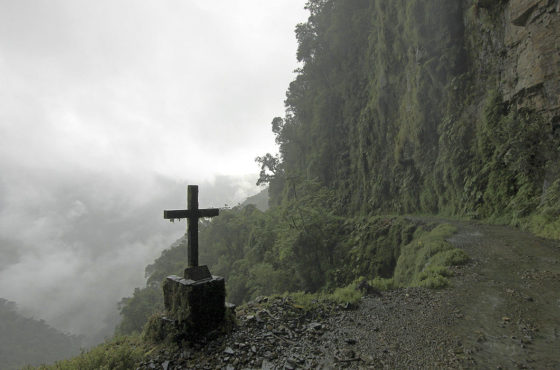Very beautiful and very dangerous places on the planet
The road of death, Bolivia
It was built in 1932. The presence of blind turns, difficult terrain (on one side of the road mountain, which sat down on the other – shestisotmetrovy open) and disgusting pavement were for many years the cause of many road accidents. Now – in the presence of a bypass road – here you can find only extreme tourists.

The North Yungas Road is a road leading from La Paz to Coroico, 56 kilometres (35 mi) northeast of La Paz in the Yungas region of Bolivia. In 1995 the Inter-American Development Bank christened it as the “world’s most dangerous road”. In 2006, one estimate stated that 200 to 300 travellers were killed yearly along the road. The road includes cross markings on many of the spots where vehicles have fallen.
The South Yungas Road connects La Paz to Chulumani, 64 kilometres (40 mi) east of La Paz, and is considered to be nearly as dangerous as the North Road.
This is one of the few routes that connects the Yungas region of northern Bolivia to the capital city. Upon leaving La Paz, the road first ascends to around 4,650 metres (15,260 ft) at La Cumbre Pass, before descending to 1,200 metres (3,900 ft) at the town of Coroico, transiting quickly from cool Altiplano terrain to rainforest as it winds through very steep hillsides and atop cliffs.
The largely single-lane road has few guard rails and cliffs of up to 600 metres (2,000 feet). Most of the road is the width of a single vehicle, about 3.2 metres (10 ft). During the rainy season from November to March, rain and fog can severely hamper visibility, and water runoff can turn the road into a muddy track, affecting traction. In the summer, rockfalls are common and vehicle dust limits visibility as well.